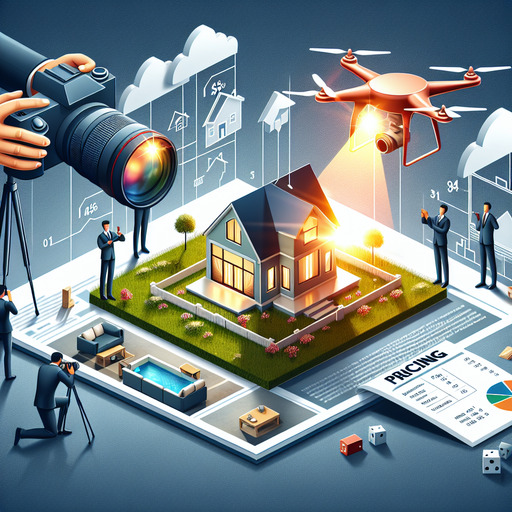
-
Table of Contents
- Mastering Real Estate Photography: Tips, Techniques, and Tools
- Understanding the Importance of Real Estate Photography
- Essential Real Estate Photography Tips
- 1. Mastering the Art of Lighting
- 2. Choosing the Right Equipment
- 3. Composition Techniques for Stunning Photos
- Advanced Techniques: Real Estate Drone Photography
- Pricing Your Real Estate Photography Services
- Case Study: Successful Real Estate Photography
- Conclusion
- Questions and Answers
Mastering Real Estate Photography: Tips, Techniques, and Tools
In the competitive world of real estate, first impressions are everything. High-quality real estate photography can make or break a property listing, influencing potential buyers’ decisions before they even step foot inside. This guide will explore essential tips, techniques, and tools to elevate your real estate photography game, ensuring your listings stand out in the crowded market.
Understanding the Importance of Real Estate Photography
Real estate photography is more than just snapping pictures of a property. It’s about capturing the essence and potential of a space, enticing buyers to envision themselves living there. According to the National Association of Realtors, 87% of home buyers found photos to be the most useful feature of online property listings. This statistic underscores the critical role photography plays in real estate marketing.
Essential Real Estate Photography Tips
1. Mastering the Art of Lighting
Lighting is a crucial element in real estate photography. Proper lighting can highlight a property’s best features and create a welcoming atmosphere.
- Utilize natural light: Shoot during the golden hours (early morning or late afternoon) for soft, warm lighting.
- Use artificial lighting: Supplement with flash or continuous lighting to fill in shadows and enhance details.
2. Choosing the Right Equipment
Investing in the right real estate photography equipment can significantly impact the quality of your photos.
- Camera: A DSLR or mirrorless camera with a wide-angle lens is ideal for capturing spacious interiors.
- Tripod: Ensures stability and allows for long exposure shots in low-light conditions.
3. Composition Techniques for Stunning Photos
Composition is key to creating visually appealing real estate listing photos.
- Rule of thirds: Position key elements along the grid lines for balanced and engaging images.
- Leading lines: Use architectural lines to guide the viewer’s eye through the photo.
Advanced Techniques: Real Estate Drone Photography
Real estate drone photography offers a unique perspective, showcasing properties from above and highlighting their surroundings.
- Regulations: Ensure compliance with local drone regulations and obtain necessary permits.
- Editing: Use real estate photography editing software to enhance aerial shots and correct any distortions.
Pricing Your Real Estate Photography Services
Determining real estate photography pricing can be challenging. Consider factors such as location, property size, and the complexity of the shoot. Offering tiered packages can cater to different client needs and budgets.
Case Study: Successful Real Estate Photography
Consider the case of a real estate agent who transformed their listings with professional photography. By investing in high-quality images, they increased their property views by 50% and reduced the time on the market by 30%. This example illustrates the tangible benefits of professional real estate photography services.
Conclusion
Real estate photography is a powerful tool in the property market. By mastering lighting, composition, and advanced techniques like drone photography, you can create compelling images that captivate potential buyers. Remember, investing in the right equipment and pricing your services appropriately can set you apart from the competition.
For more information on real estate photography, visit this Wikipedia page.
Questions and Answers
Q1: What is the best time of day for real estate photography?
A1: The best time is during the golden hours, which are early morning or late afternoon, as the lighting is soft and warm, enhancing the property’s appeal.
Q2: How can I improve my real estate photography skills?
A2: Practice regularly, study composition techniques, and experiment with different lighting setups. Consider taking courses or workshops to further develop your skills.
Q3: What should I include in my real estate photography pricing packages?
A3: Include options for different property sizes, the number of photos, and additional services like drone photography or virtual tours to cater to various client needs.
If you’re interested in learning more about our real estate photography services or have any questions, please reach out to us via our contact page.